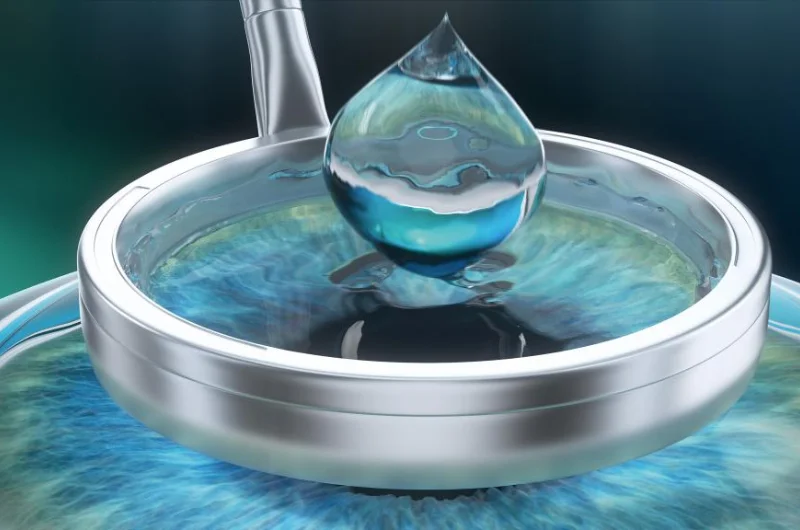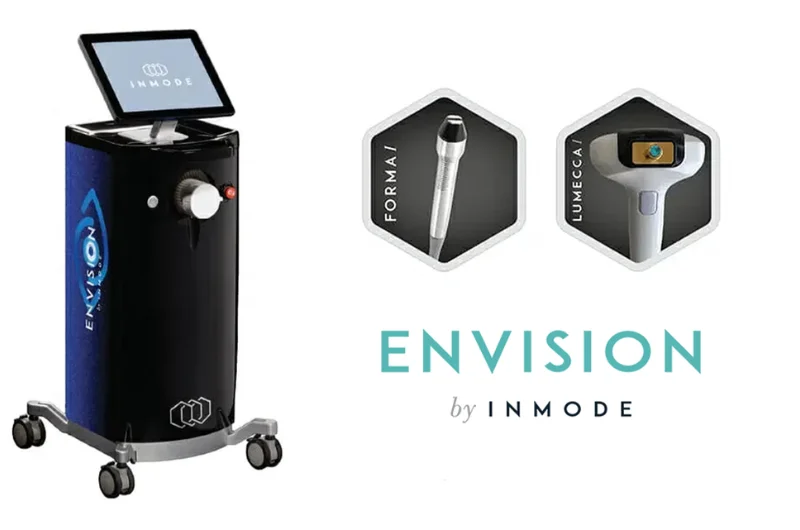
What is PRK Lasik Eye Surgery? How It Works, Recovery, and Is It Right for You?
For anyone who gets tired of wearing glasses or contact lenses every day, laser eye surgery can be a great solution. While LASIK is more commonly known, not everyone can go for LASIK—some people have thin or sensitive corneas or other eye conditions that make LASIK unsuitable. If this is the case, PRK (Photorefractive Keratectomy) is the perfect alternative. At Pro Sight Hospital, we offer PRK using the latest ZEISS technology, making the procedure safe, precise, and effective. In this guide, we’ll expln what PRK is, how it works, who can have it, and what recovery is like.
What is PRK Lasik Eye Surgery?
Photorefractive Keratectomy, or PRK, is a laser eye surgery procedure intended to correct visual refraction problems, including nearsightedness (myopia), farsightedness (hyperopia), and astigmatism. Essentially, PRK accomplishes this by reshaping the cornea, the eye's transparent front portion, to enable light to properly focus on the retina located at the rear of the eye.
What does PRK eye surgery do?
In simple terms, PRK (Photorefractive Keratectomy) eye surgery reshapes the front of your eye (the cornea) permanently using a laser. Its main function is to correct typical refractive defects, which are faults in the way that your eye focuses light. In doing so, it hopes to cut or stop your reliance on glasses or contact lenses.
PRK for Defence Aspirants: Ideal for Army, Navy and Air Force Candidates
Many people who want to join the Army, Navy, or Air Force are not eligible for LASIK because it involves creating a corneal flap, which may pose risks during active duty or combat situations. PRK is an excellent option for them because it is a flap-free procedure and perfectly safe for people with physically demanding careers. At Pro Sight Hospital, we use the latest ZEISS technology to perform PRK, helping aspiring defence personnel achieve clear, stable vision while meeting the strict medical requirements of the armed forces.
How does PRK work?
The main focus of PRK is to reshape your cornea so that light entering your eye focuses correctly on the retina, resulting in clear vision. Read the following steps to know how it is done.
- Preparation and Numbing: Firstly, the surgeon applies powerful anaesthetic drops to numb your eye. This makes the entire process painless. An instrument is also used to gently hold your eyelids open to prevent blinking.
- Epithelium Removal: This is the main step that defines PRK. The epithelium, a very thin protective outer layer of the cornea, is gently removed. This is done to give the laser direct access to the underlying corneal tissue that needs reshaping.
- Corneal Reshaping with a Laser: An excimer laser, which uses a cool beam of ultraviolet light, is then used to precisely reshape the cornea. The laser removes microscopic amounts of tissue based on a unique, pre-programmed map of your eye's refractive error.
- Correcting the Focus of Light: By changing the curvature of the cornea, the surgery alters how light rays bend as they enter your eye. The new corneal shape ensures that light focuses directly onto the retina at the back of the eye, instead of in front of it (nearsightedness) or behind it (farsightedness).
- Applying a Protective Lens: Once the reshaping is complete, the surgeon places a special, soft "bandage" contact lens over the cornea for a few days. This lens is not for vision correction; its purpose is to protect the exposed surface of the eye, reduce discomfort, and promote the healing of the epithelial layer.
- Natural Healing: Over the next three to five days, your body's natural healing process takes over. The epithelial cells regenerate and grow back over the reshaped corneal surface. Once this layer has sufficiently healed, your eye doctor will remove the bandage contact lens during a follow-up visit. Your vision will continue to sharpen and stabilise over the following weeks and months.
Ideal Candidates for PRK
- Have thin corneas
- Have dry eyes
- Candidates who want to apply for defence services like the Army, Navy or Air Force
- Lead an active lifestyle or have a high-risk profession
- Have stable vision
- Are in good general health
PRK Eye Surgery Recovery
- Protective lens after surgery - A soft “bandage” contact lens is placed on your eye after PRK to protect the cornea and support healing during the first few days. You should rest your eyes. Taking a nap or keeping your eyes closed for a few hours helps reduce discomfort and speeds up healing.
- Take a short break from work - Most people need 2–4 days off from work or school. We also advise avoiding heavy physical activity for at least a week.
- Mild discomfort is normal - You may feel slight pain, irritation, or a burning sensation in your eyes for the first 2–3 days. This is normal and can be managed with pain relievers.
- Use prescribed eye drops regularly - You will be given an antibiotic and lubricating eye drops to prevent infection and dryness. Follow your doctor’s instructions carefully and do not miss any doses.
- Vision improves gradually - Your eyesight will be blurry in the first few days. Vision starts improving within 3–5 days and keeps getting clearer over the next few weeks. Full visual clarity may take a few weeks to a month.
- Follow-up visits are necessary - Regular checkups with an eye surgeon are important to monitor healing and remove the bandage contact lens safely when your eye is ready.
#Note: Eyes are sensitive to light after PRK. Wearing sunglasses outdoors protects your eyes from UV rays and supports safe healing.
PRK Eye Surgery Recovery Time
While the procedure itself takes only a few minutes, the healing process takes a little longer.
| Timeline | Recovery Progress |
|---|---|
| Day 1–3 | Mild discomfort, light sensitivity, blurry vision |
| Day 4–7 | Bandage lens removed; gradual improvement starts |
| 2–4 weeks | Vision continues to improve |
| 3 months | Final clear vision achieved |
Benefits of PRK
- Safe and effective vision correction
- No corneal flap, hence no flap-related complications
- Ideal for thin or irregular corneas
- Suitable for athletes and military personnel
- Permanent results with stable vision
Advanced ZEISS Technology for PRK at Pro Sight Eye Hospital
At Pro Sight Hospital, we use the latest ZEISS laser technology for PRK eye surgery to ensure safe, accurate, and reliable results. ZEISS is a globally trusted leader in precision optics and medical laser systems. With its advanced excimer laser and intelligent eye-tracking system, ZEISS technology allows highly controlled corneal reshaping for clear and stable vision. The procedure is completely blade-free, features minimal tissue removal, and ensures a smooth recovery. With ZEISS technology, patients experience enhanced visual outcomes, reduced discomfort, and improved night vision quality, making PRK a safe and modern choice for vision correction.
How Painful is PRK Eye Surgery?
PRK is not painful during the surgery because numbing eye drops are used. You remain awake during the procedure but feel no pain—only slight pressure.
However, mild discomfort is normal after surgery:
- Slight burning or irritation
- Watery eyes
- Light sensitivity
- A feeling of something in the eye
This usually lasts for 2–3 days. We will give you pain relief eye drops and medicines to make recovery comfortable. Most patients describe the discomfort as manageable, not severe.
Is PRK Better than LASIK?
PRK and LASIK are both effective laser eye surgeries designed to correct vision problems like nearsightedness, farsightedness, and astigmatism. One is not “better” than the other—it depends on your eyes.
PRK may be better for you if:
- You have thin corneas
- You have dry eyes
- You play contact sports or have a job with risk of eye injury (army, police, boxing, etc.)
- You want to avoid corneal flap complications (LASIK creates a flap, PRK does not)
LASIK may be better if:
- You prefer a faster recovery
- You want a clear vision within 24–48 hours
- Your corneas are thick and healthy
PRK and LASIK both give excellent long-term results. PRK is often chosen for safety in people who are not ideal candidates for LASIK. Your eye surgeon will recommend the best option based on your eye tests and lifestyle.
Is PRK Eye Surgery Safe?
Yes, PRK (Photorefractive Keratectomy) is a safe and trusted vision correction surgery that has been performed worldwide for over 30 years. It is FDA-approved and recommended by eye specialists, especially for people who are not suitable for LASIK.
- It is a blade-free and flap-free procedure
- It reduces the risk of corneal complications
- It uses advanced laser technology for high precision
- It has excellent long-term visual results
- The risk of infection or serious side effects is very low
At Pro Sight Hospital, our laser vision expert, Dr Sheetal Brar, uses advanced ZEISS technology to perform PRK with precision and safety. We provide personalised eye assessments and complete post-surgery care to ensure fast and comfortable recovery.


